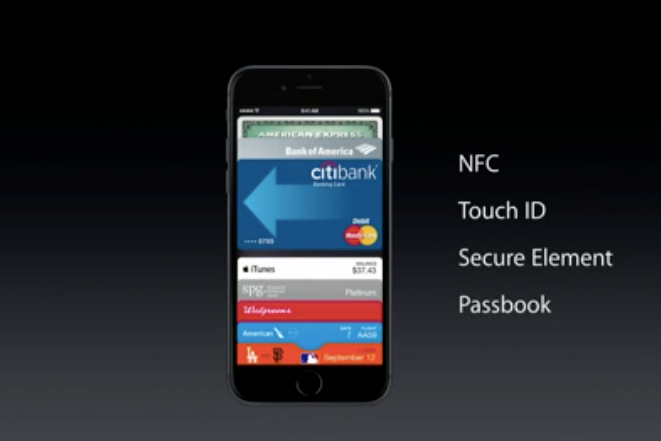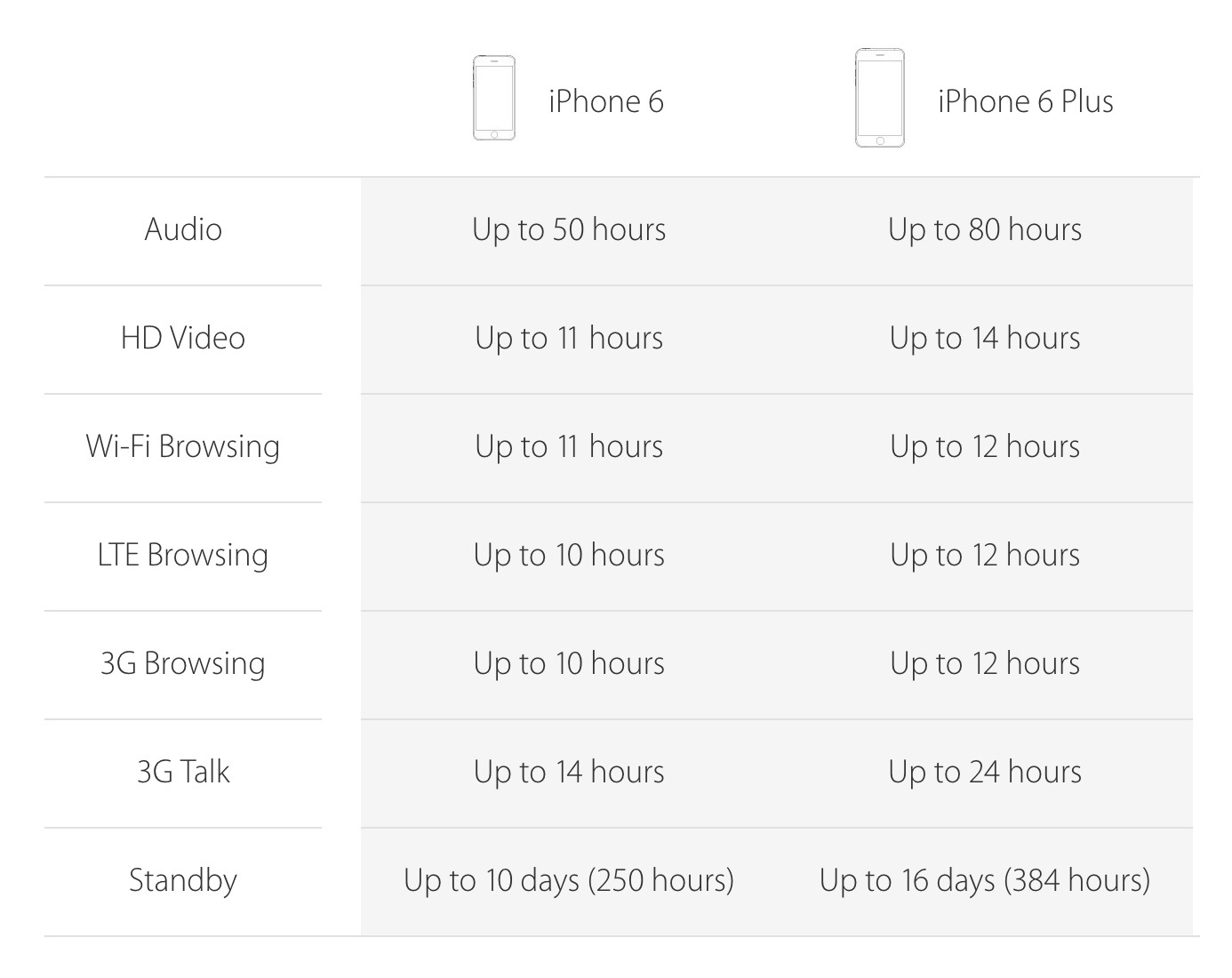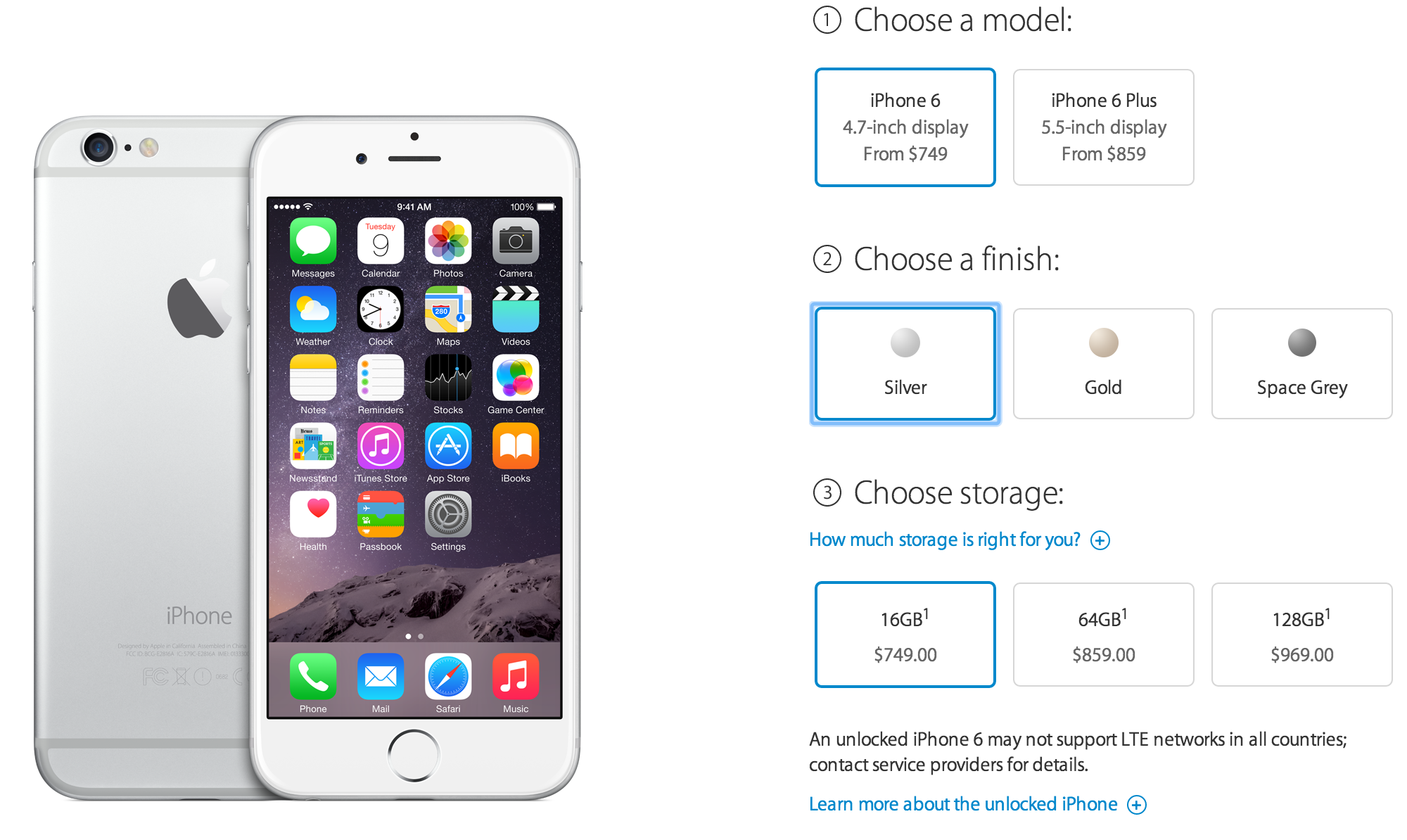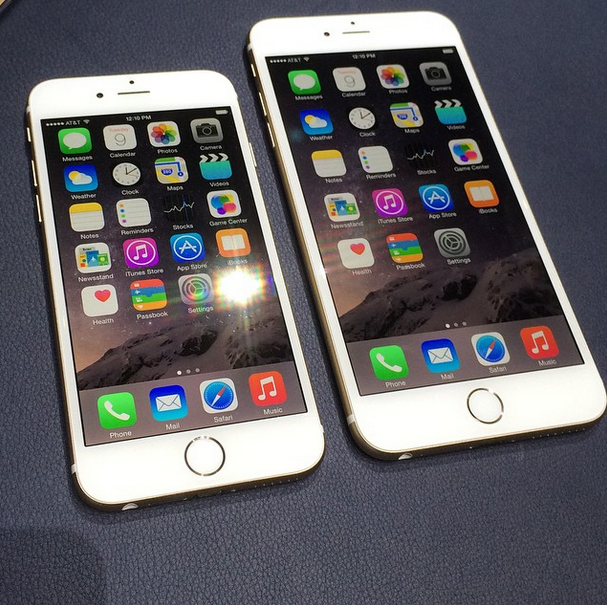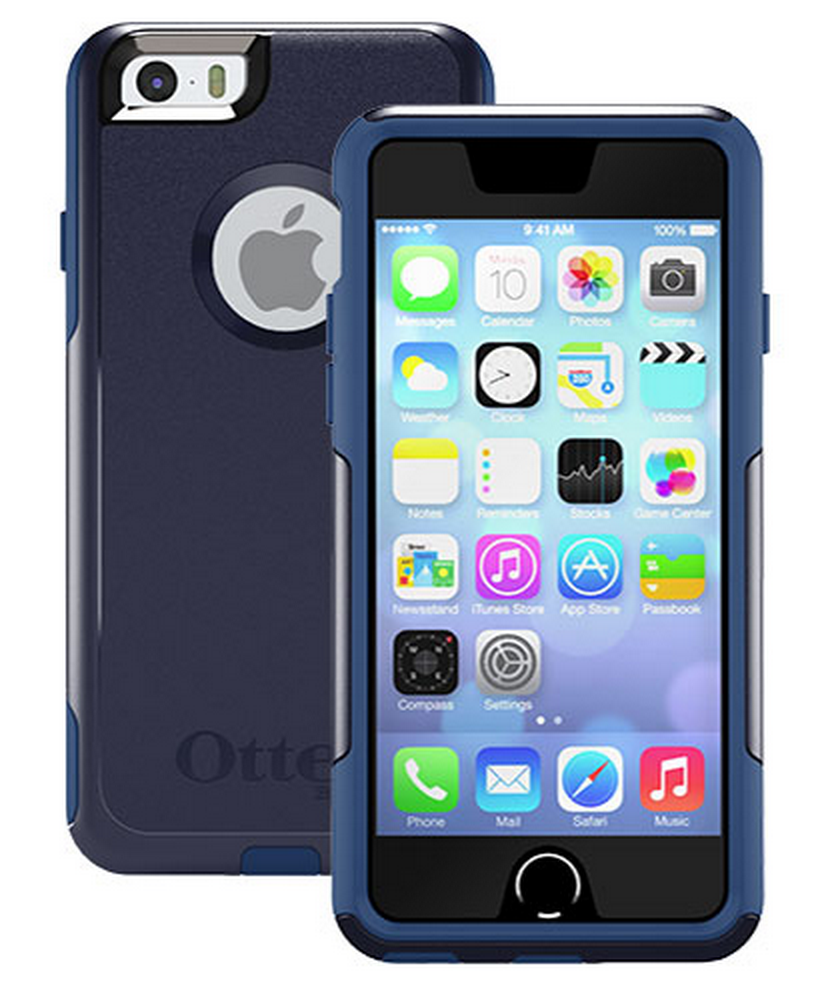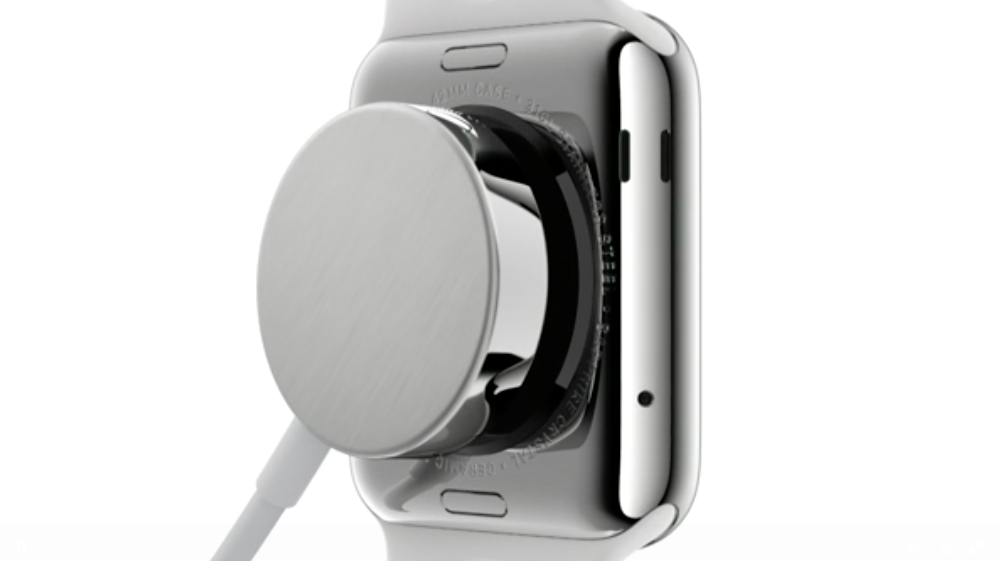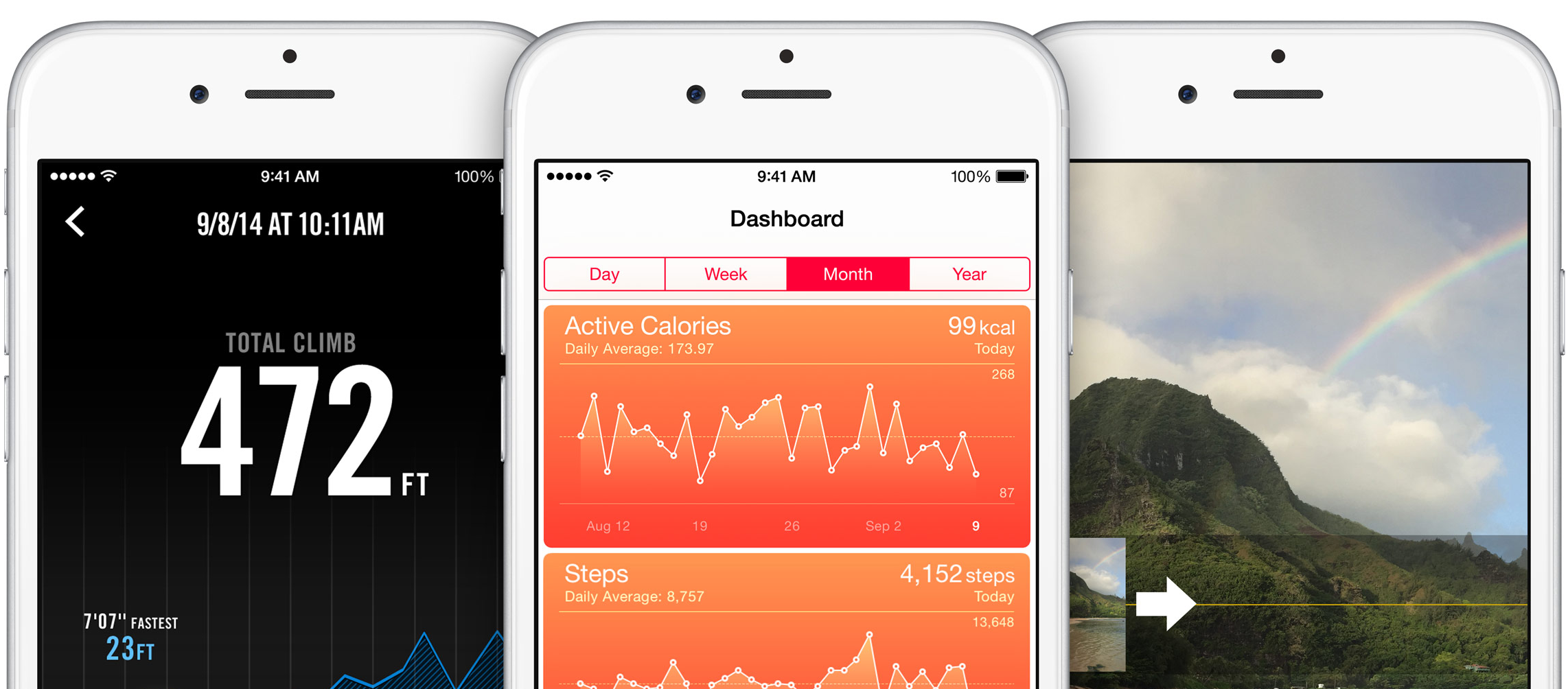
Apple announced two new smartphones this week, the iPhone 6 and iPhone 6 Plus. They’re both bigger and faster than the previous generation, but there are a number of interesting improvements that will excite previous owners and potentially bring some Android loyalists into the fold. Let’s explore some of them.
Better Canadian LTE support
The iPhone 6 and iPhone 6 Plus both support Band 7 LTE for the first time, making them compatible with Rogers’ and Bell’s growing 2,600Mhz network.
While LTE support has been extensive since the iPhone 5, the new devices support 150Mbps download speeds, which both Rogers and Bell support with their large 20x20Mhz channels. If that means nothing to you, here’s a summary: in big cities where the carriers support Band 7, the iPhone 6 and 6 Plus should be capable of double the download speeds of the previous generation. This is enabled by a new baseband chip which, in addition to supporting Band 7, is capable of LTE Advanced carrier aggregation, which is the ability to combine the bandwidth of two
But Band 7 support goes hand-in-hand with another new feature of the iPhone 6: Cat-4 LTE support, which maxes at 150Mbps down and 50Mbps up. That, along with carrier aggregation, bodes well for Bell and Telus’s acqusition of unpaired 700Mhz D and E block spectrum. According to Extremetech’s Neal Gompa,
“The fact that band 29 is supported indicates that the iPhone supports LTE-Advanced carrier aggregation, since band 29 (as a supplemental downlink band) cannot be used without being paired with bands 2 or 4. AT&T in the US, and Bell & Telus in Canada control band 29 spectrum. They would love having the ability to aggregate it with their LTE FDD networks. Bell and Telus also control spectrum in band 13, which means that the iPhones can take advantage of Bell and Telus’ multi-band 700MHz network once it is fully deployed.”
Apple Pay is going to just work (when it arrives, eventually)
Apple Pay, the company’s new mobile payment solution, is beginning its reign in the U.S., but if it were to come to Canada we’d already have the infrastructure for it.
That’s because it uses pretty much the same technologies as the disparate and fragmented products being offered by the banks: a secure element and NFC. It also goes one step further, randomizing your credit card number in a process called tokenization.
The issue with Apple Pay is that the company has to go through the banks, which issue the credit cards from Visa, MasterCard and AMEX, to gain support in individual countries. Unlike many U.S. institutions, the Canadian banks are both conservative and protectionist: they want to control every element of the mobile payment stack, and have ceded little control to the carriers. It’s why Rogers is having such trouble bringing mainstream banks to its Suretap Wallet project.
On the other hand, carriers and banks are slowly shacking up: CIBC, TD and Desjardins now offer credit card payments through their own apps on all three major carriers, while Scotiabank and RBC and are building relationships with certain carriers as well. If Apple can work with the five major banks to roll out Pay support (they already have relationships with Visa, AMEX and MasterCard) it could be a boon for an already-mature payment market.
Battery life is likely going to skyrocket
One of the biggest issues with iPhones to date has been battery life. While iOS is inherently more efficient than Android in terms of background processes, iOS 7 negatively affected users’ uptime by allowing apps to do more during times of idleness.
Not only does iOS 8 fix some of those issues by adding more background process APIs for developers, the new iPhones, especially the larger 6 Plus, will offer nearly double the battery life in some situations as the iPhone 5c and 5s.
Apple dropped the popular 32GB version for some reason
Instead of doing what many other manufacturers are doing with their flagships, Apple decided to keep the base 16GB model and skip straight to 64GB for $110 more. From a value perspective, it makes the 64GB and 128GB more attractive — though still expensive — but as we’ve found over the years, 16GB is not enough for many users.
More interesting is that instead of trying to fit the 32GB somewhere between the 16 and 64GB models, Apple decided to drop it altogether, a storage size that many people (including me) find suits them perfectly.
What they could have, and maybe should have done is differentiate the 6 and 6 Plus by storage, starting the latter at 32GB and offering a high-end 128GB tier, keeping the traditional 16/32/64GB options on the 6. That could have lowered prices while keeping margins high. But being Apple, we’ll never quite understand its reasons for doing things.
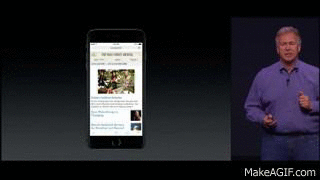
There’s a weird one-handed mode
There were a few strange concessions made throughout the Apple keynote, but none more so than Reachability, a new feature for the iPhone 6 and 6 Plus that, with a double tap of the home button, cuts in half the height of the current screen so people can more easily reach the top.
In typical Apple fashion, it’s simple and elegant and will probably be quite useful, but it also owes a debt to the one-handed modes that Samsung, Huawei, LG and many other manufacturers have been including in their smartphones to date, many of which were derided by Apple loyalists as base or incomplete solutions.
Gaming on the iPhone 6 & 6 Plus is going to be both better and worse
With larger sizes comes different gaming experiences for users. Android users will be used to the varied sizes of handsets and how they affect quick-draw games. For example, holding a 5.5-inch phablet in one hand makes it pretty difficult to reach certain parts of the screen, limiting the potential spots one can hit in a portrait-oriented title.
But the higher-resolution screens, especially that of the iPhone 6 Plus, coupled with the improved A8 processor, makes the new smartphone primed for the types of games that iOS developers seem to love creating for the platform. Over the years, I’ve begun to prefer mobile games more on tablets than phones, but the rise of the larger-screened smartphone, which tends to be closer at hand more often, has reversed the tendency.
Most apps and games will scale properly up to the new resolutions, but developers will begin making small changes that optimize them for the higher-density iPhone 6 Plus, just like they did for the Retina iPads.
The new iPhones are still all about the camera
From larger pixels to ultra, ultra slo-mo, the new iPhones are still all about the camera. Despite an identical resolution to the previous model, the new iPhones — especially the 6 Plus with its Optical Image Stabilization — promise to continue Apple’s dominance in smartphone photography.
These new models promise phase detection autofocus, similar to what is found on the Samsung Galaxy S5 and Note 4, more than doubling autofocus speed. Continuous autofocus in video is also reportedly improved.
Finally, Slo-Mo at 240fps is just astounding.
Larger iPhones may negatively affect the case market
It’s harder to justify fitting a bulky case on top of a massive smartphone, and buyers of the larger iPhone 6 Plus may find themselves frustrated by the size of the phone with a cover attached. That won’t stop accessory manufacturers from coming out with a bevy of solutions for such a problem, though.
The Apple Watch can double as a walkie-talkie
The Apple Watch can answer incoming phone calls from your iPhone, but it will also have push-to-talk and audio memo functionality, making it possible to carry on a conversation in near real-time without committing to a phone call. It’s the voice-equivalent of text messaging.
That, coupled with Digital Touch, a new input method utilizing pressure-sensitive taps and small drawings, opens up the possibilities to new forms of communication. For better or worse.
Apple Watch will need to be charged nightly
Apple’s first wearable will need to be charged nightly, despite us not knowing its battery size or screen resolution. According to David Pogue of Yahoo Tech, Apple told him users will likely charge their watches every night with the included wireless charging stand.
MobileSyrup may earn a commission from purchases made via our links, which helps fund the journalism we provide free on our website. These links do not influence our editorial content. Support us here.


